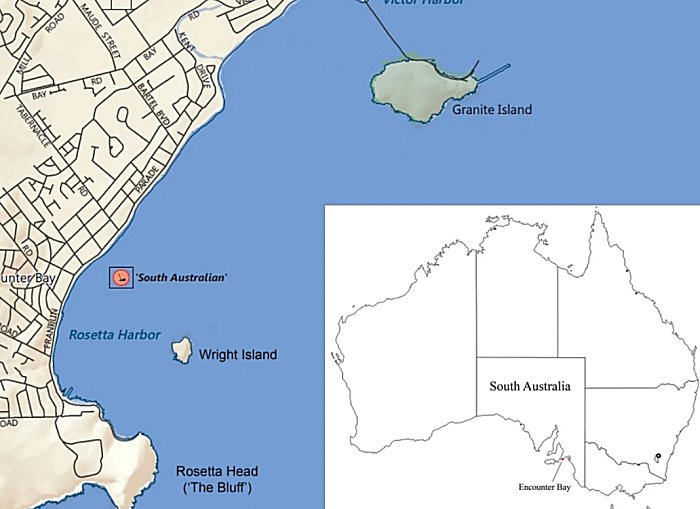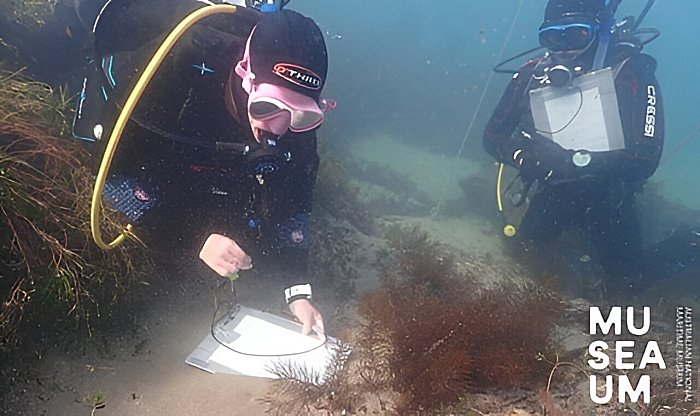Unearthing South Australia’s Oldest Known Shipwreck: The Bark South Australian (1837)
Conny Waters - AncientPages.com - The Australian National Maritime Museum (ANMM) and non-profit Silentworld Foundation have continued ongoing archaeological investigation of the wreck of South Australian, with recent research from a combined team of experts published in the journal Historical Archaeology.
The South Australian is South Australia’s oldest known European shipwreck. The English barque, wrecked in in 1837 in Encounter Bay near modern-day Victor Harbor, has drawn keen interest since its discovery in 2018. The wreck site project team includes members of the ANMM, Silentworld Foundation, South Australian Maritime Museum, South Australia’s Department for Environment and Water, Flinders University, and MaP fund.
Originally a postal packet called Marquess of Salisbury, which delivered mail between England and far-flung outposts of the British Empire from 1820, the vessel later operated as a British naval packet, named HMP Swallow, before being procured by the South Australian Company, which re-named the ship South Australian.
The ship was designed to carry a huge amount of sail on a relatively small hull for maximum speed. While it transported approximately 80 immigrants to the new colony, its primary function was as a ‘cutting-in’ vessel, or flensing platform, where blubber was removed from harpooned whales as part of the shore-based whaling industry at Encounter Bay.
While loaded with whale oil and readying for departure to Hobart, South Australian was caught in a south easterly gale and wrecked on 8 December 1837.
There were no fatalities, and the ship ultimately broke up and was forgotten until the 1990s, when it was the subject of two unsuccessful shipwreck surveys conducted by the South Australian government. Data collected during these expeditions and archival information helped the research team to establish a new search area that led to South Australian’s discovery in April 2018.
Credit: Australian National Maritime Museum
Remnants of the ship exposed above the seabed included timber framing and hull planking, copper keel bolts, and fragments of glass and pottery.
Covid-19 travel restrictions interrupted further visits to South Australian for two years, but in 2022 maritime archaeologists from the ANMM and an archaeological conservator from the Silentworld Foundation, accompanied by volunteers, returned to continue work at the site. Photogrammetric 3D recording was carried out in conjunction with site mapping. The team also conducted a comprehensive conservation assessment to determine the wreck site’s level of preservation and suggest strategies for its continued protection.
Ongoing work at the site has included comprehensive documentation of exposed hull components and targeted recovery of at-risk diagnostic artefacts. A small selection of objects was also mapped in place and recovered.
The items include a gun flint, decorated ceramic fragments, ship’s fasteners, glass bottles and a whetstone used to sharpen tools. All are currently undergoing conservation.
‘South Australian’s historical and archaeological significance cannot be overstated. As South Australia’s oldest recorded European shipwreck, and one of its earliest immigration vessels, it has the potential to enhance our understanding of the state’s initial colonisation and occupation—including the establishment of extractive mercantile activities, such as shore-based whaling and interactions between European colonists and Aboriginal people," Dr James Hunter, ANMM’s Curator of Naval Heritage and Archaeology, and an Associate Lecturer of Archaeology at Flinders University, concluded in the article recently published in Historical Archaeology.
‘Similarly, the site’s distinction as one of only two (former) 19th-century British sailing-packet shipwrecks to undergo archaeological scrutiny brings an international dimension to its significance. While a sizable percentage of South Australian’s surviving fabric remains buried, recent seabed changes are uncovering the site at an alarming rate. This has reinforced the need for additional investigation and inquiry and underscores the urgency with which site stabilization efforts should be adopted and enacted.’
While weather and water visibility impeded efforts to complete the 3D photogrammetric survey of South Australian in late-2022, imagery from this and prior surveys has since been used to generate a digital 3D model of most of the site.
This in turn will form the basis of a virtual reality experience currently under development at Germany’s University of Applied Sciences, Kaiserslautern. South Australian is also the subject of a graphic novel based on research and archival sources, including the original logbook, which will bring its story to vivid life for new audiences.
The team’s work continues, and they aim to conduct further archaeological investigation of South Australian and finish the photogrammetric survey during the latter half of 2023.
The Historical Archaeology article is Open Access and can be viewed at the following link.
Written by Conny Waters - AncientPages.com Staff Writer
More From Ancient Pages
-
 Hephaestus (Hephaistos) – God Of Fire And Master Craftsman Constructed Talos, First Greek Robot And Divine Weapons Of The Gods
Featured Stories | Jul 7, 2018
Hephaestus (Hephaistos) – God Of Fire And Master Craftsman Constructed Talos, First Greek Robot And Divine Weapons Of The Gods
Featured Stories | Jul 7, 2018 -
 Aglaonice (Aganice): Female Greek Astronomer From Thessaly Was Believed To Be A Witch
Featured Stories | Sep 4, 2019
Aglaonice (Aganice): Female Greek Astronomer From Thessaly Was Believed To Be A Witch
Featured Stories | Sep 4, 2019 -
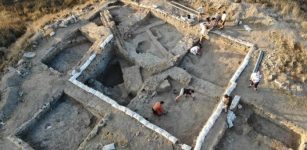 Huge Defensive Wall Excavated At Tel Erani, Israel Is More Than 5,300 Years Old
Archaeology | Sep 12, 2019
Huge Defensive Wall Excavated At Tel Erani, Israel Is More Than 5,300 Years Old
Archaeology | Sep 12, 2019 -
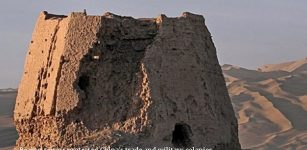 Nine Great Wall Beacon Towers Discovered In China’s Inner Mongolia
Archaeology | Apr 21, 2020
Nine Great Wall Beacon Towers Discovered In China’s Inner Mongolia
Archaeology | Apr 21, 2020 -
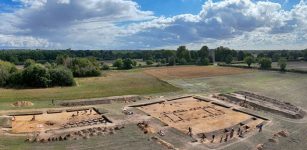 Huge 1,400-Year-Old Hall Of The First Kings Of East Anglia Discovered In Rendlesham
Archaeology | Oct 5, 2022
Huge 1,400-Year-Old Hall Of The First Kings Of East Anglia Discovered In Rendlesham
Archaeology | Oct 5, 2022 -
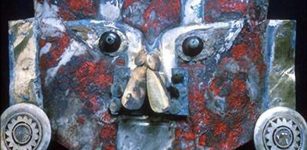 Red Paint On 1,000-Year-Old Gold Mask From Peru Contains Human Blood Proteins
Archaeology | Nov 1, 2021
Red Paint On 1,000-Year-Old Gold Mask From Peru Contains Human Blood Proteins
Archaeology | Nov 1, 2021 -
 Stonehenge Is Older Than Mankind – Archaeologist Suggests
Archaeology | Apr 12, 2018
Stonehenge Is Older Than Mankind – Archaeologist Suggests
Archaeology | Apr 12, 2018 -
 On This Day In History: National Hero Paul Revere Warns Of The British Coming – On Apr 18, 1775
News | Apr 18, 2016
On This Day In History: National Hero Paul Revere Warns Of The British Coming – On Apr 18, 1775
News | Apr 18, 2016 -
 Discovery Of Second Viking Site Point Rosee In North America Could Re-Write Ancient History
Archaeology | Apr 1, 2016
Discovery Of Second Viking Site Point Rosee In North America Could Re-Write Ancient History
Archaeology | Apr 1, 2016 -
 Deception And Hidden Truth – Ancient Struggle Of The Eagle And Serpent – Part 3
Ancient Mysteries | Sep 9, 2019
Deception And Hidden Truth – Ancient Struggle Of The Eagle And Serpent – Part 3
Ancient Mysteries | Sep 9, 2019 -
 Native Americans And European Legends Tell Peculiar Beings From The Sky Still Live On The Earth
Ancient Mysteries | May 16, 2018
Native Americans And European Legends Tell Peculiar Beings From The Sky Still Live On The Earth
Ancient Mysteries | May 16, 2018 -
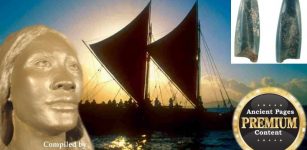 Mysterious Ancient Jade Artifact May Offer Evidence Of Trans-Pacific Contact – Did Ancient Sailors From California Visit New Guinea?
Ancient Mysteries | Jan 14, 2018
Mysterious Ancient Jade Artifact May Offer Evidence Of Trans-Pacific Contact – Did Ancient Sailors From California Visit New Guinea?
Ancient Mysteries | Jan 14, 2018 -
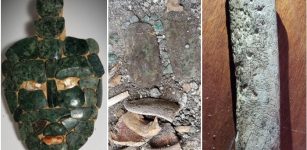 Unique Ancient Treasures Found In Maya King’s Tomb At Chochkitam, Guatemala
Archaeology | Feb 2, 2024
Unique Ancient Treasures Found In Maya King’s Tomb At Chochkitam, Guatemala
Archaeology | Feb 2, 2024 -
 On This Day In History: Chaldean Account Of The Deluge Translated And Presented For The First Time – On Dec 3, 1872
News | Dec 3, 2016
On This Day In History: Chaldean Account Of The Deluge Translated And Presented For The First Time – On Dec 3, 1872
News | Dec 3, 2016 -
 Legend Of The Blue Men Of Minch: Were They Mythological Creatures Or Real Men?
Featured Stories | May 13, 2016
Legend Of The Blue Men Of Minch: Were They Mythological Creatures Or Real Men?
Featured Stories | May 13, 2016 -
 Scathach – The Shadowy One – Legendary Martial Arts Teacher Who Trained Cuchulainn And Other Warriors
Featured Stories | Mar 4, 2019
Scathach – The Shadowy One – Legendary Martial Arts Teacher Who Trained Cuchulainn And Other Warriors
Featured Stories | Mar 4, 2019 -
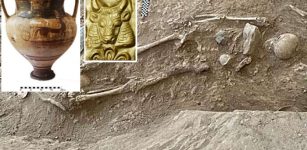 Tombs Rich In Artifacts Discovered By Swedish Expedition In Cyprus
Archaeology | Jul 6, 2023
Tombs Rich In Artifacts Discovered By Swedish Expedition In Cyprus
Archaeology | Jul 6, 2023 -
 Unexplained Lights Over English City Reported By Police May Have A Deeper Meaning
Featured Stories | Dec 11, 2019
Unexplained Lights Over English City Reported By Police May Have A Deeper Meaning
Featured Stories | Dec 11, 2019 -
 Dinosaurs Were The First To Take The Perspectives Of Others
Fossils | Jun 1, 2023
Dinosaurs Were The First To Take The Perspectives Of Others
Fossils | Jun 1, 2023 -
 On This Day In History: Father Of Nation Mahatma Gandhi Was Born – On Oct 2, 1869
News | Oct 2, 2016
On This Day In History: Father Of Nation Mahatma Gandhi Was Born – On Oct 2, 1869
News | Oct 2, 2016

